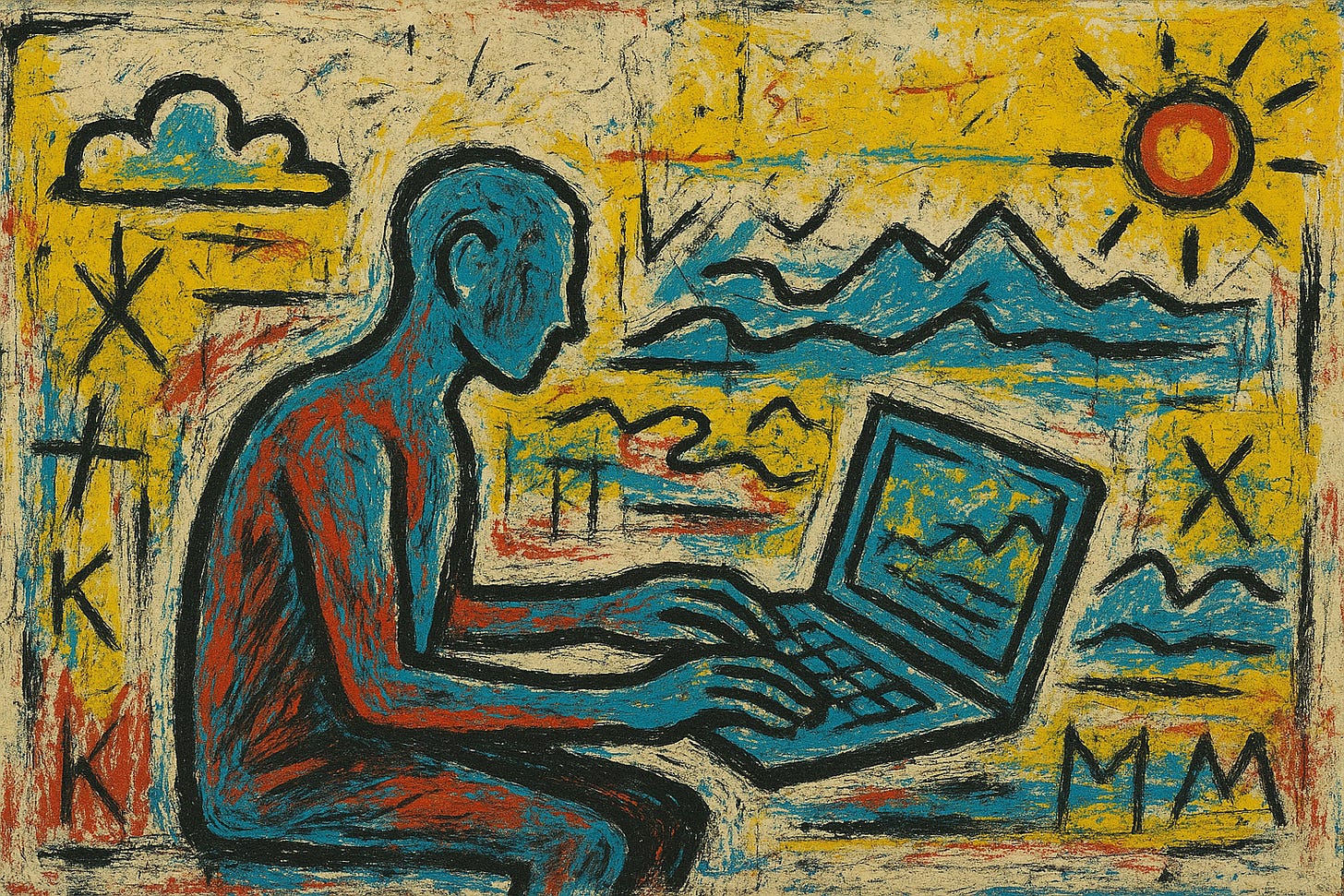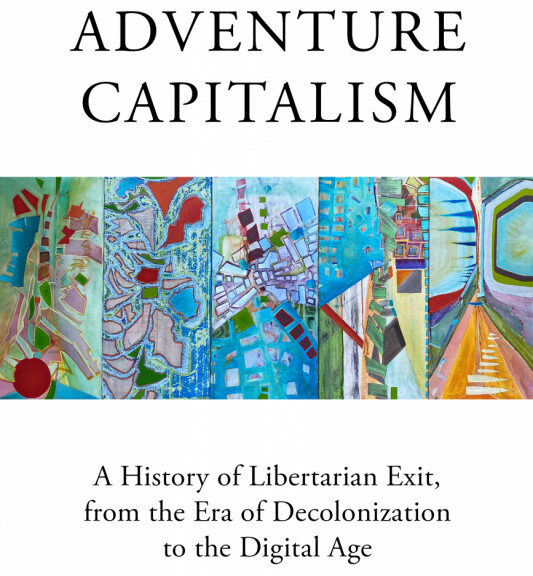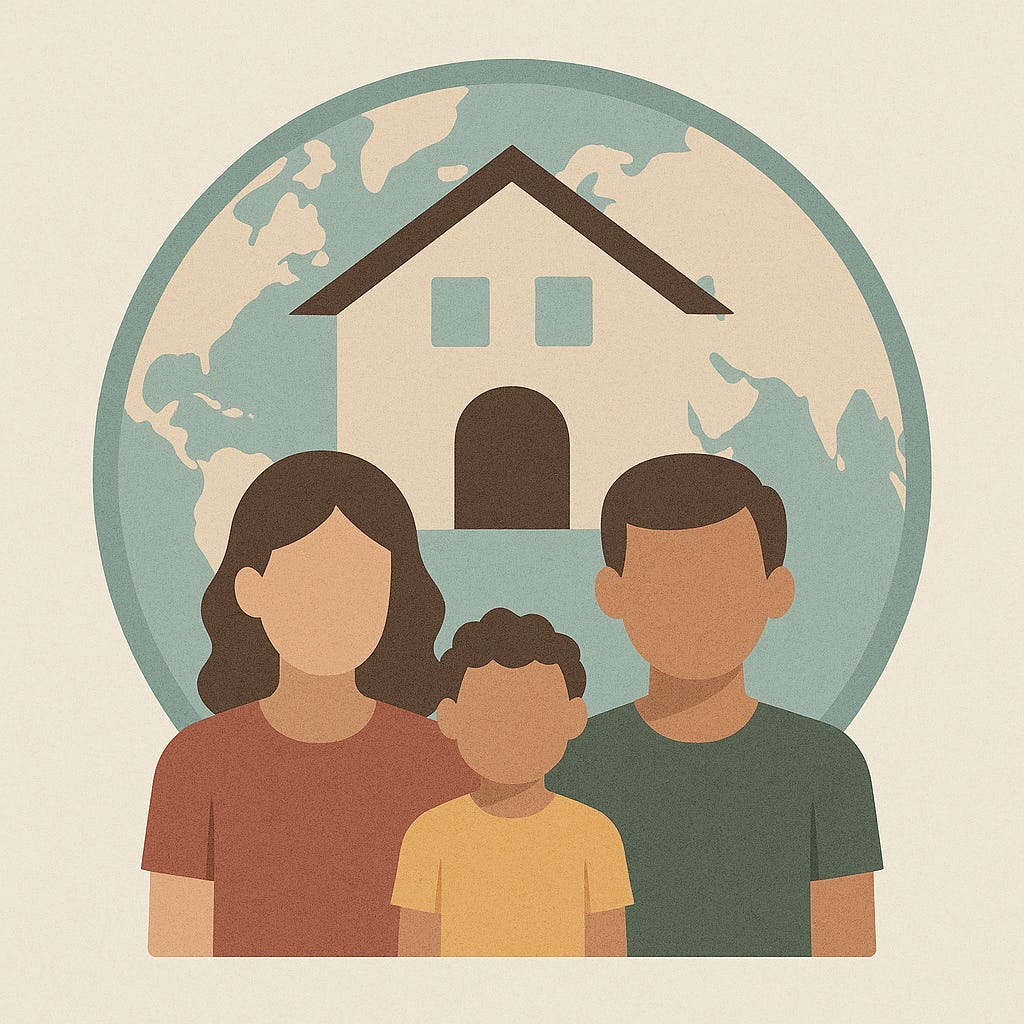From Digital Nomad to Network Participant
Exploring NomadList's 2025 data on the average digital nomad, and addressing gaps for emerging network states
Demography is destiny - Auguste Comte
In 2025, the digital nomad lifestyle is no longer an experiment. It’s a mature, self-sustaining class of global citizens.
Among many successful solo projects, serial entrepreneur and indie developer Pieter Levels is famous for his startup NomadList: a website and online community designed to help digital nomads and remote workers find the best places to live and work around the world. It provides data-driven insights and resources to aid in location scouting, cost of living comparisons, and connection with other remote professionals.
Recently, Nomadlist released a 2025 snapshot: Who is the average nomad in 2025?
As one of the largest and most diverse sample statistics on digital nomads around the world, this data is a treasure trove in better understanding the typical demographics of digital nomads. In this post, we're going to dissect this report, address gaps, and provide some guidelines that might help builders and digital nomads; towards mutual alignment and building more permanent communities.
Understanding Displacement
There's different types of migration and different reasons why people would move or be displaced. Knowing the differences clarifies who we’re actually talking about. Digital nomads and early-adopters in network state-adjacent movements are likely to fall in the voluntary and seasonal/temporary migration categories.
However, as the ongoing collapse of the US Dollar and an emerging multi-polar world unfolds in the coming decades, we are likely to see greater levels of human displacement and mass migration (for various reasons, although a deeper dive is outside of the scope of this article). Below is a list of 7 types of human migration, with examples:
1. Voluntary Migration
Definition: Migration based on personal choice, typically for economic, lifestyle, or educational opportunities.
Includes:
Economic migration (e.g., Indian tech worker in Canada)
Lifestyle migration (e.g., remote workers moving to Bali)
Retirement migration (e.g., Canadians moving to Mexico)
Return migration (e.g., students or workers returning to home country)
Network migration (e.g., relocating based on ideological or moral vectors)
2. Involuntary (Forced) Migration
Definition: Movement compelled by external threats such as conflict, persecution, or disasters. Not a true choice.
Includes:
Refugees (protected under international law)
Internally Displaced Persons (IDPs) (displaced within their own country)
Asylum seekers (awaiting refugee status)
Climate or environmental migrants (due to drought, flooding, etc.)
Human trafficking victims (coerced migration for exploitation)
3. Mixed Migration
Definition: Migration driven by a mix of voluntary and forced factors.
Example: A Venezuelan fleeing economic collapse and authoritarianism; not clearly one or the other.
4. Seasonal or Temporary Migration
Definition: Migration tied to time-bound work, education, or weather.
Includes:
Seasonal labor migration (e.g., farm workers)
Circular migration (repeating movement between countries)
Student migration (temporary study abroad)
5. Internal Migration
Definition: Movement within national borders.
Includes:
Rural-to-urban migration (e.g., urbanization trends in India or China)
Urban-to-rural migration (counter-urbanization)
Post-conflict resettlement (people returning to their original homes)
6. Stateless Persons
Definition: Individuals who are not recognized as citizens by any country, often resulting in long-term displacement or migration.
Example: Rohingya people from Myanmar, denied citizenship and displaced into Bangladesh.
7. Historical or Colonial Migration
Definition: Migration shaped by historical forces such as slavery, colonization, and empire.
Includes:
Slave trade (e.g., Africans to the Americas)
Indentured labor (e.g., Indians to the Caribbean)
Colonial settlers (e.g., British migration to Australia)
When examining digital nomads, we are looking at voluntary migration (subtype: network migration) and seasonal or temporary migration (subtype: circular migration). This kind of migration currently happens most often for generally privileged, sovereign individuals who relocate for an overall better quality of life. Although, we can expect to see other types of migration become more relevant with increasing demographic displacement as politics, economics, climate change and other factors affect global mobility and one’s decision to stay, or leave.
There is a reasonable quality of existing data on digital nomad demographics, a group most closely aligned with crypto-native frontier experimenters. The other types of human migration mentioned above also pose their own unique sets of challenges. For example, emerging network state polities likely wouldn’t focus on attracting asylum seekers or refugees, simply because the humanitarian needs of these emigrants, while very real, are incompatible with what a growing experimental community building on the frontier might have to offer them.
Highlights: The Typical Nomad in 2025
From the Nomadlist report:
Age and education. The most common age is 36. Most digital nomads are well into their career, ranging from mid twenties up to early forties. Roughly nine in ten have higher education.
Income and employment. Median income sits around $85k USD, with a large six-figure segment. Employment skews to full-time roles plus a sizable founder and freelancer contingent.
Work setting. The majority work from a home office or a co-working space, not a beach. Despite traveling around, once they are settled into a new locale, digital nomads tend to prefer routine, and that includes having a regular work setup.
Politics and dating. Men split between progressive, libertarian and centrist identities with very few conservatives. Women lean even more progressive. The overall ethos is secular, with a minority identifying as spiritual. Two-thirds of nomads are single; navigating intimacy and friendships on the road.
Comms and coordination. Across different messaging apps on the internet, there’s plenty of evidence for large digital diasporas of varying groups and channels, loosely themed around geography, politics, co-living, hobbies, and remote work. Within the digital nomad survey, Telegram was the top messaging app used by nomads (48%), followed by WhatsApp (42%). Despite not being an option on the digital nomad survey, many network state and crypto communities also flourish on Discord. Perhaps getting digital nomads to assimilate into more permanent network communities on land, means first finding ways of onboarding them in the cloud, on Discord communities. Think of it as overcoming “digital borders” or a “digital divide”, before overcoming the “physical divide” of relocation. Although, Telegram and TON are re-unifying after seven years of legal setbacks, suggesting perhaps all social media will eventually intertwine with crypto.
Ethnicity and language. Nearly 60% identify as White/Caucasian. Asians (14%), Latinos (12%), Blacks (7%), South Asians / Indians (5%), and Middle Easterners (3%) make up the rest. In terms of nationality, the United States is by far the leading source, accounting for ~44 % of nomads. Other major nationalities include the United Kingdom (7%), Canada (5%), Russia (5%), Germany (4%), France (3%), Brazil (3%), and Australia (2%). This list blends predominantly English speaking countries and European nations with a few large emerging markets (Brazil, Russia). It suggests that nomadism is most accessible to those from affluent nations, which makes sense given currency arbitrage makes remote work even more attractive.
Selection effects. This analysis draws heavily on Nomads.com’s live dataset of 37k+ paying members who actively log travel. It likely skews toward higher incomes and higher mobility than the broader remote-worker population. The results are therefore directional. Still, for founding teams making near-term decisions about where to plant seeds and whom to recruit, these signals are strong enough to act on. This sample is likely very WEIRD.
Digital nomads have matured into a distinct, influential class of geo-flexible professionals. The median profile is clear: early to mid-30s, highly educated, high earners in tech or adjacent online work, heavy users of Telegram and WhatsApp for coordination, and concentrated in a recurring circuit of Europe and Southeast Asia. The lifestyle is mobile at the city level yet anchored at the country level, with many people spending months in one jurisdiction, while taking shorter local trips.
This pattern, plus the community’s crypto-native, libertarian-progressive bend, makes nomads a natural talent pool for network-state experiments that start online and materialize on land. At the same time, the data exposes real gaps: gender imbalance, a skills mix tilted toward software and marketing over trades and care work, and a thin layer of shared purpose. If network states are to graduate from meetup to micro-society, these holes must be filled deliberately.
Movement Patterns:
Fast in Cities, Slow in Countries
Nomads bounce quickly between cities yet stay far longer at the country level. Nearly half of city stays are under a week, but the average time in a single country is roughly six months. Think Thailand or Portugal as a seasonal base, plus frequent hops within. Mobility has fully rebounded from pandemic lows and now exceeds 2019 travel intensity.
Top-rated and most-visited hubs show a stable “circuit”: Tokyo, Mexico City, Budapest, Lisbon, Bangkok, Singapore, Chiang Mai, Kuala Lumpur, and the usual big Western gateways. Japan ranks among the most liked countries and cities among frequent travelers.
Why this matters for founders: The existing digital nomad lifestyle is compatible with multi-site, seasonal community design. These hotspots are already familiar to the transient digital nomad. If you are building and scaling a network state to attract longer term living, designing residency rotations aligned with travel calendars and visas around existing nodes, can help build a real cadence of movement and location stability.
Values and Tools:
The Network-State Substrate
Nomads are digitally native and crypto-aligned. They coordinate on Telegram, embrace borderless payments, and hold a freedom-first lens that blends progressive social values with a libertarian appetite for autonomy. This is the exact cultural substrate that Balaji’s network-state thesis predicts would self-organize, crowdfund land, and pursue recognition. Projects discussed in previous posts here and here, have already drawn this cohort.
However, it’s important to note that members of broader society from different socio-economic class, vocation, education, and technical skills, will have varying familiarity with tech adoption, especially in emerging innovation domains involving cryptocurrency, blockchain technology, and physical enclaves tied to digital polities. “Web3 countries” need the skills of “Web2 countries”, and there needs to be intentional thought on the UX and UI of these systems to help bridge knowledge gaps.
Did you know?
The Myers-Briggs personality type distribution for the general population, versus bitcoiners is heavily skewed in favor of the INXX personality types.
Given that currently many “network-staters” overlap with crypto enthusiasts, its likely there’s a similar restriction of range in personality types. Intentional growth planning and a reflexive immigration policy can help improve community personality diversity, while maintaining a unified mission.
The Gaps: What are we Missing?
Gender balance and family readiness
Women are only 13 percent of the dataset. A durable society needs a healthy gender ratio, and family infrastructure are not optional. Emerging network states need to build for safety, childcare, education, and multi-stage life paths. Especially if drawing from Asia, many collectivist cultures tend to be family-oriented and solo relocation is difficult if leaving a family unit behind.Full-stack skills for a real society
The existing skill mix for digital nomads is heavy on software, design, and marketing. The cohort lacks medicine, agriculture, trades, construction and manufacturing. A network state that largely attracts developers is simply unsustainable. Real sovereignty needs farmers, midwives, mechanics, mediators, and myth-makers. Onboarding this class of workers into crypto-native and future-looking network communities will pose its own set of significant social and cultural challenges, which need to be overcome.Shared purpose
Secular and progressive values create cultural alignment, but manifesting a unified mission is a more difficult task. Network states need a “moral innovation” that pulls people through hard tradeoffs. Digital nomads are already transient by nature, and would easily relocate elsewhere if they didn’t resonate with network nouns (a network’s people, places, and things). There needs to be a new version of network nationalism that gravitates the individual towards a state of permanence and identity with the group and land; even if that land is fragmented globally in pockets, enclaves, and archipelagos.
A Practical Playbook:
From Nomad to Node Participant
1) Recruit for completeness, not narrow competency
Set targets: aim for at least 40 percent women over time, plus families. Publish the goal and back it with policy and metrics. Build systems, civic engagement, and social scenes that would attract women to join and stay. Build cultural scenes that allow for civic engagement from all walks of life.
Create on-ramps for non-tech talent: clinicians, teachers, carpenters, electricians, farmers, chefs, firefighters, operators. Offer subsidized housing or tuition-for-equity programs that trade mentorship and services for membership units. Pathways to tokenized equity or gated access can align incentives.
2) Build the skills graph
Map the community’s capabilities and gaps. Then recruit explicitly to fill the missing nodes.
Treat Dartnell’s The Knowledge and North’s How to Invent Everything as checklists: ensure your founding cohort collectively knows how to build, feed, power, heal, and govern a town. Cover your bases with people who know each base. If that’s not possible, figure out how to outsource the work reliably and scale towards independence. By necessity, this will require some degree of hierarchy, bureaucracy, government, and embedded social systems. It is the writer’s belief that without these social inventions, network state experiments will fail past a certain size and scale, becoming the web3 version of failed anarchist and libertarian movements of the past. Building outside existing institutions means innovating on them for greater transparency and trust.
3) Codify a simple, sticky mission
A mission is not a slogan. Pick one problem to solve for the world and hard-wire it into membership, governance, and rituals. The mission should explain why people accept constraints today for compounding benefits tomorrow. The mission is important for every member. The transient digital nomad needs reasons to stay just as much as the displaced farm worker leaving their home country due to climate disasters.
4) Design multi-site living that matches real mobility
Operate multiple nodes along the existing nomad circuit. Example: winter in Thailand, spring in Japan, summer in the Balkans, fall in Portugal. Bundle member services across nodes so the social graph travels with the person. Build a coherent scene that defines “home”, even if geographically distant.

5) Build for governance turnover and continuity
Train successors early. Use rotating councils and stewardship terms. Do not let the project hinge on one charismatic operator. While having a founder-led mission is necessary for grit and early growth, systems only work if they can replicate and scale (see: bus factor). The best leaders by necessity empower and help others level up to assume more responsibility, becoming the next generation of leaders.
6) Treat society like an agile system
Measure where people churn, where conflicts cluster, and where services bottleneck. Iterate transparently. The advantage of an early small community is speed of learning and knowledge transmission. Working through problems early, can prevent these problems from compounding with greater intensity as the project scales. Plan for conflict resolution and governance.
Why Now?
Briefly addressing libertarian critiques; in Craib’s Adventure Capitalism (2022), he overviews the modern history of “libertarian exit projects”. He criticizes tech-funded, anti-authoritarian ideas like Balaji’s network state. In his book, he argues most movements like this are:
Elitist: Accessible mostly to the wealthy and mobile
Neo-colonial: Exploiting “underdeveloped” regions for private gain
Undemocratic: Avoiding obligations to others, particularly the marginalized
Craib argues this “freedom” is really about avoiding the consequences of living in a collective society. Although, the recent generation of network state experiments don’t feel that way.
For example, take Balaji’s own Network School - a reasonably affordable, globally competitive, community-as-a-service. The project is situated in a formerly abandoned “5-star luxury ghost town”, and plans to scale in cooperation with local and international laws, creating a template for other startup societies to fork and build upon. Making a voluntary, experimental living project affordable from the start, in the middle of nowhere, legally within a special economic zone, makes this and other startup society experiments feel different.
Craib’s critiques might have applied historically, but I suspect purist libertarian movements are recognizing the importance of legacy institutions, systems of order, and sound money. Opaque and corruptible organizations need to be replaced with better versions of themselves, not thrown out altogether. What’s different this time? Crypto gives us an answer: transparency and immutability.
What Founders Should Stop Doing
Stop optimizing for devs. Despite the technical importance of having software and hardware engineers, the growing community can quickly become a brittle monoculture. Recruit nurses, teachers, trades, small manufacturers, and farmers as aggressively as you recruit engineers. Recruiting in themed batches and groups can help onboard subcultures more effectively than starting with diverse batches and shocking the existing culture (assimilation and integration are incredibly important in transition).
Vibes cannot substitute for a mission. You need a reason to persist through policy setbacks, media cycles, and internal disagreements. Having an explicit moral innovation and goal of the network state helps align values up front. The bolder and more operationally defined the mission, the better likelihood for alignment between network participants and citizens.
Stop building for tourists if you want citizens. Design for people who will return every season, contribute services, and raise kids. The movement pattern of digital nomads already supports this. What’s missing is having a series of consistent, cross-border homes and familiar cultural scenes. The most tangible solution might just evolve in future versions of network states. Digital nomads are perhaps the first demographic to test living in different network state experiments. Attract them and solve further pain points to scale into other demographics.
From tribe to polity
The 2025 cohort shows momentum: a large, mobile, tech-enabled population clustering in repeatable hubs, with the tools and appetite for new governance.
Digital nomads have the digital unity, skills, and motivation to join network states, but they need to galvanize around specific causes and develop more cohesion. Nomads often say, “home is wherever I open my laptop.” The next evolution is “home is the community that travels with me, online and on land.”
In summary, to build a network state from the digital nomad population: recruit widely, stand for something, train for everything, care for everyone, and plan for the future. By doing so, founders can create a community that not only thrives internally but also serves as a beacon to the world - showing that a diverse group of global citizens can self-organize and innovate new forms of living together. This will fulfill the promise that Balaji and others see in network states, turning the transient energies of digital nomads into the stable light of a new polity.
Article Summary:
🌐 Digital Nomads → Network State Citizens
NomadList’s 2025 data reveals a high-earning, crypto-aligned, globally mobile class ready to seed new polities, but hampered by gender imbalance, narrow skill sets, and weak shared purpose.
🛠️ The Playbook for Permanence
Recruit for completeness, map essential skills; design seasonal, multi-node homes; codify a mission that survives bad weather; and build governance that outlives founders.
⚖️ Avoid Old Pitfalls
Modern network-state experiments can sidestep elitism and colonial patterns by integrating legally, staying affordable, and leveraging crypto for transparent, immutable systems.
🏠 From Laptop to Lasting Home
The evolution is from “home is wherever I open my laptop” to “home is the community that travels with me”; turning transient tribes into durable, governed societies.








While the article provides a brilliant illustration of the motivations of network migrants, it is overly optimistic about the transition from nomadic to networked identity. Two points are alarming:
1. Firstly, identity as a network is not a universal motivation, as we discovered in our Shegby (The Network State). Not all digital nomads are motivated by ideology. For many, it is simply about work and freedom rather than forming connections or becoming digital citizens.
2. Economic instability only leads to forced displacement. People are more often forced to look for ways to survive than to become part of new political or cultural entities. Therefore, the argument about the mass emergence of network states seems premature.
Nevertheless, the article is on the right track in giving those already driven by this idea the opportunity to find a technological and cultural foundation for implementing network states. Thank you!